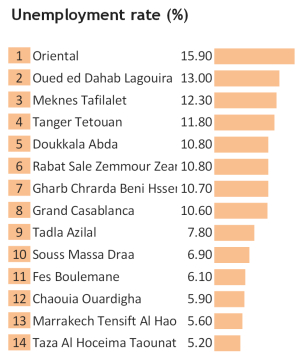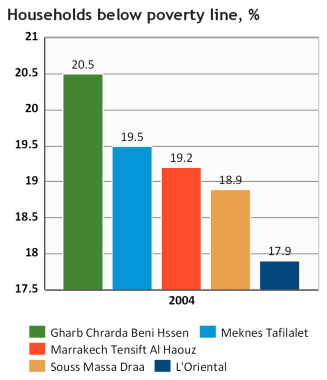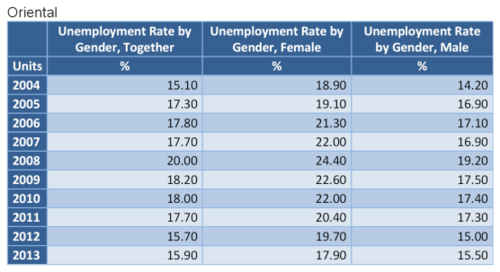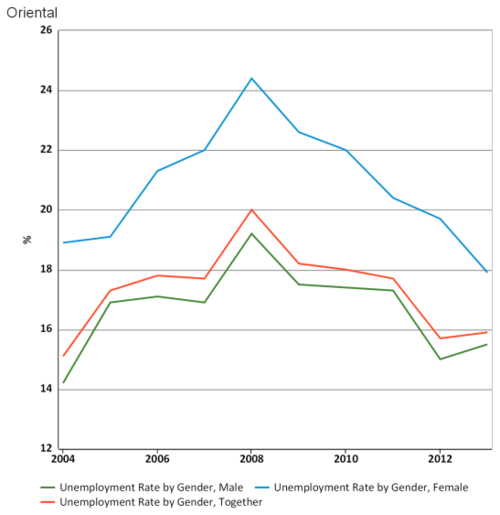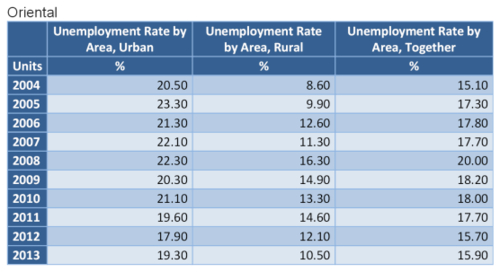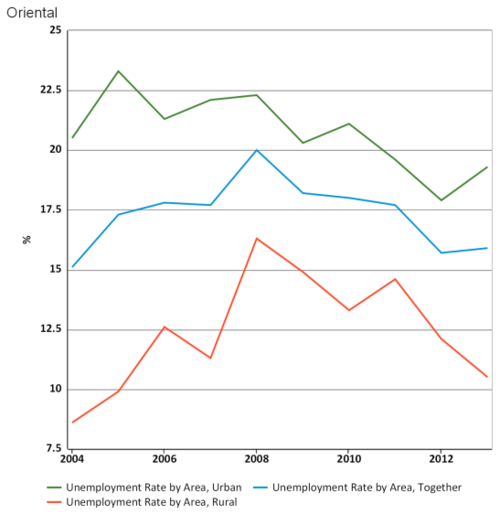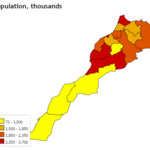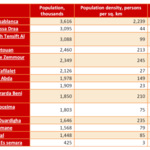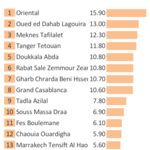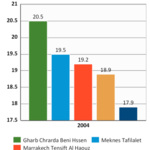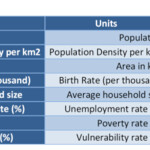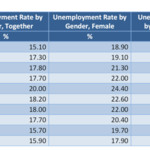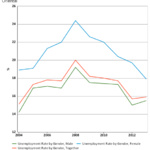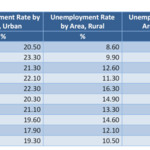Social Economic Context | North East Morocco
The African Development Bank Group (2015) mentions three statements on the economic outlook of Morocco:
- The economy has strong prospects for economic growth and measures to strengthen the macroeconomic base have reduced the budget and current account deficits.
- The government continued improving the business climate and adopted a 2014-20 industrial strategy to support structural change and boost the country’s position in global value chains.
- Morocco has made great efforts to meet social challenges and regionalisation has speeded up to improve living conditions, but regional and spatial disparities are still considerable.
These three measures significantly resulted in poverty reduction and access to education and health care. Between 2001 and 2011 poverty rates dropped from 15,3 percent to 6,2 percent. However, this also contributed to inequality regarding different areas in the country and gender inequality. For example, the income disparity coefficient raised from 39,5 to 40,9 between 1999 and 2007. Also, poverty remained mainly rural, whereas unemployment is an especially urban problem.
“To meet the challenge of persistent vulnerability and inequality, Morocco should continue essential reforms and speed up implementation of those already begun. The growth analysis by the African Development Bank, the government and the Millennium Challenge Corporation stresses reforms in justice, taxation, land law and education.” (African Development Bank Group, 2015)
Social Economic & Social Demographic Data | Morocco
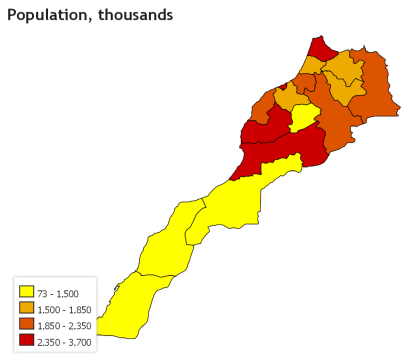
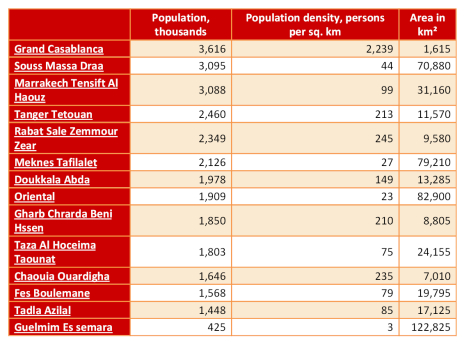
Looking at the graphs above we can remark a lot of differences between the regions within Morocco. The south of Morocco, known as the Western Sahara, is a remote area with very few inhabitants, whereas regions around cities such as Marrakech and Rabat and also regions in the north of Morocco are far more densely populated. As our project will take place in the region Oriental, our focus will be on this region. We can see its unemployment rate being the highest of Morocco. Therefore we provide more information and data on this topic below. With a population density of 23, the region Oriental is one of the most thinly populated areas in Morocco. The percentage of households that are below the poverty line is 17,9 percent, which is a relatively high percentage. This fact is also a reason to carry out the project in this area.
Social Economic & Social Demographic Data | region Oriental
General data
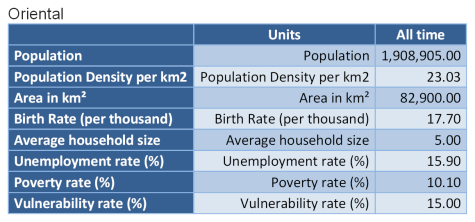
Unemployment rates
Considering all the data given in the graph above, we can note that unemployment in general has been reduced in the last couple of years. However, urban employment has a consistent high rate. Also remarkable is that, despite the fact that women are still more often unemployed, the difference between the unemployment rate of men and that of women has become smaller every year. This could indicate a progress in gender equality.
Taking the information on unemployment in the region Oriental into account, a part of the project will be to explore opportunities that can contribute to regional employment.
Sources
African Development Bank Group (2015). Morocco Economic Outlook. Retrieved from: http://www.afdb.org/en/countries/north-africa/morocco/morocco-economic-outlook/
Open Data for Morocco (2014). Unemployment rate of Morocco, 2011. Retrieved from: http://morocco.opendataforafrica.org/ixcaqae/unemployment-rate-of-morocco-2011
Open Data for Morocco (n.d.). Population, Unemployment rate & Households below poverty line. Retrieved from:
http://morocco.opendataforafrica.org/
Open Data for Morocco (2014). Morocco Data Atlas, 16 January 2012. Retrieved from: http://morocco.opendataforafrica.org/syjypsf/morocco-data-atlas-16-january-2012
